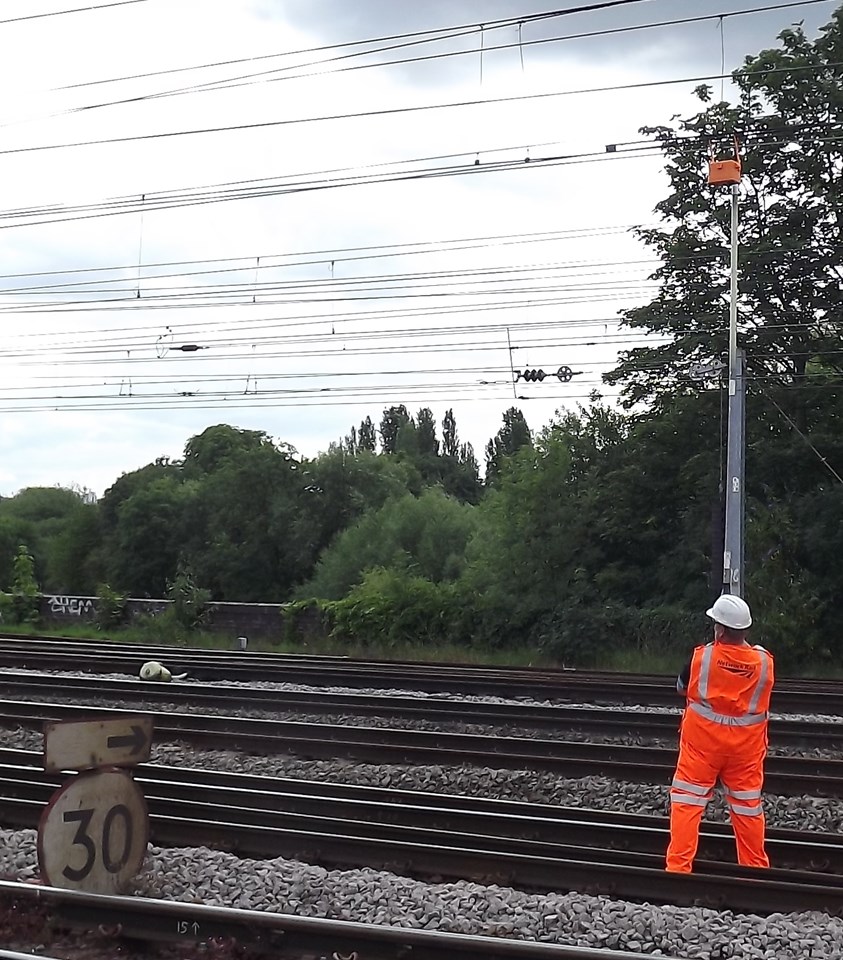Thursday 25 Aug 2011
RAILWAY POWER CAMERAS TO REDUCE DELAYS AND COSTS
- Region & Route:
- National
Spotting a defect on an overhead rail wire upto 25ft above your head can be tricky even to the expert eye but new camera technology, which has been rolled out to rail teams across Britain, will mean more efficient and more accurate maintenance, fewer delays to passenger and freight services and save millions of pounds in delay payments.
Following a successful trial, Network Rail has supplied 30 cameras to maintenance delivery units on electrified routes across the country. A huge benefit is that engineers can safely operate the cameras without turning off the power and closing the line – a huge time saver.
When out on routine track patrols, engineers can attach the camera to the overhead wire and it is then held steady by two small stabilising arms on insulated poles. The camera can tilt so that images and video of the top and side of the wire can also be seen. High resolution images are instantly captured and streamed to a portable laptop. Engineers can view this for instant review of the condition of the wire and equipment components or analyse the footage back in the delivery unit. A schedule for repair of any defects can then be put in place.

Steve Featherstone, director of maintenance for Network Rail said: “When the overhead wires come down, it can cause massive delays to passengers and freight services and can cost Network Rail millions of pounds each year in compensation. We’ve been looking at smarter ways to reduce such incidents by using technology to help us find faults and fix them before they become a problem.
“The cameras give us a greater field of vision than the naked eye and this allows our teams to be less reactive and build this maintenance into our schedules, which will mean fewer closures of lines, fewer delays and a better value railway for everyone.”
During testing, the camera was able to stream images to a laptop over 100 metres away, enabling a greater area to be covered at one time. Another benefit of the camera is that it can measure the thickness of the contact wire so engineers can gauge wear rates, find thin spots and then plan either contact wire renewals using real time wire wear calculators and small piece replacements to prevent dewirements from contact wire coming apart.
Contact information
Passengers / community members
Network Rail national helpline
03457 11 41 41
Latest travel advice
Please visit National Rail Enquiries
Journalists
Network Rail press office - National
020 3356 8700
mediarelations@networkrail.co.uk
About Network Rail
We own, operate and develop Britain's railway infrastructure; that's 20,000 miles of track, 30,000 bridges, tunnels and viaducts and the thousands of signals, level crossings and stations. We run 20 of the UK's largest stations while all the others, over 2,500, are run by the country's train operating companies.
Usually, there are almost five million journeys made in the UK and over 600 freight trains run on the network. People depend on Britain's railway for their daily commute, to visit friends and loved ones and to get them home safe every day. Our role is to deliver a safe and reliable railway, so we carefully manage and deliver thousands of projects every year that form part of the multi-billion pound Railway Upgrade Plan, to grow and expand the nation's railway network to respond to the tremendous growth and demand the railway has experienced - a doubling of passenger journeys over the past 20 years.
Follow us on Twitter: @networkrail
Visit our online newsroom: www.networkrailmediacentre.co.uk

